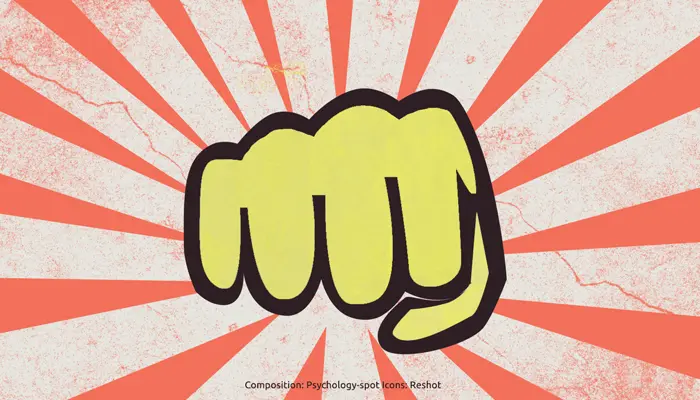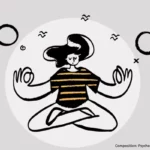
Domestic violence is a sad reality that has settled in many homes, leaving deep emotional wounds. Whether it’s gender violence, parental-filial or between brothers, its consequences are devastating for those who suffer it, seriously affecting the family balance.
The victims of domestic violence are usually the most vulnerable and dependent, such as children, women, the elderly or the sick. However, in all relationships where there is a great imbalance of power, there is a person prone to becoming the victim of an abuser.
Domestic violence: A problem of increasing proportions
The concern of society for cases of domestic violence is increasing, while awareness for a reality that in the past was limited to the privacy of the home is growing. According to the World Health Organization, approximately one third of women who maintained a relationship have been victims of physical and/or sexual abuse. In some countries, the number of women victims of domestic violence is around 40%.
According to a study conducted at the University of Tuzla, of the women who suffer domestic violence, 33.3% are victims of physical abuse, 25.2% suffer sexual abuse and 25.2% are psychologically abused frequently. In fact, in 96.4% of cases, victims suffer both physical and psychological violence.
If we take a look at the situation of children, the figures are no less worrisome. The UN estimates that between 133 and 275 million children each year are victims of violence within their own homes, a space where they should find protection and affection.
In general, mothers are the ones who most often exercise violence towards their sons and daughters. But it’s the parents who often commit sexual abuse and violence that generates serious or even fatal injuries.
With these figures in mind, the best way to fight intrafamily violence is to publicize it, removing it from the four walls of the home to eliminate the stigma that surrounds it. Finally, as Jean Paul Sartre said: “Violence, whatever the way it manifests itself, is a failure”.
What is domestic violence?
By definition, domestic violence, also known as intrafamily violence, is that which occurs within the family, between people who share the same roof. It encompasses a set of actions that threaten the physical, psychological, social and/or economic integrity of a member of the family.
Domestic violence can manifest itself as direct violence through physical abuse, but it can also acquire more subtle overtones. In that case it would be a psychological intrafamiliar violence marked by behaviors such as harassment, intimidation, humiliation, economic coercion and/or silence treatment (stop talking to someone as punishment).
The profile of the abuser
When we refer to the abuser, it’s almost always a caricature. We often think of people with low educational and economic levels, even with problems of substance abuse. However, domestic violence can sneak into any home because the profile of the abuser is broader.
In fact, if we leave the stereotypes aside and a group of people gather in a room, it would be difficult to determine who the abusive men and women are, because there are no external signs that disclose them. The profile of the psychological abuser, for example, includes features such as apparent kindness. For this reason, many people in the close environment find it difficult to imagine what happens between the four walls of the home. Many abusers are very skilled at covering their tracks.
However, the most common characteristics of the abuser are:
• Seeks to control the victim. The abuser will always try to dominate and completely control his victim. He will build a relationship of dependence and submission in which taking control of the situation. To achieve this, he will subject his victim, either through physical or psychological methods.
• Low self-esteem. Although the abuser projects an image of security and power, in reality he has low self-esteem. Violence and control over the others is the expression of a low self-confidence, which leads them to dominate others to feel good about themselves.
• Unrealistic expectations or demands. The abuser will demand that his victim behave as he wishes, even if his demands are not reasonable. In fact, this person usually harbor unrealistic expectations that result in irrational demands on his victim.
• Low tolerance to frustration. The abuser is a person who loses patience quickly. When something doesn’t go according to his plans, he becomes easily frustrated and unloads that anger on his victim, which becomes his “punching bag”. This implies they are rigid people who react badly to stress.
• Difficulties in managing his emotions. The abuser is not characterized precisely by his emotional granularity. He is a person who finds it difficult to manage his emotions, so when he feels happy he can be the kindest person in the world devoting attentions to his victim, but when he gets angry his way of behaving changes drastically. In the end, that emotional lability is an expression of his inability to recognize and manage his emotions and feelings assertively.
• Hypersensitivity. The abuser is usually a hypersensitive person, which is due to his low self-esteem. It’s usual for him to assume any behavior of the others, and his victim in particular, as a personal attack reacting defensively.
• Doesn’t assume responsibilities. It’s rare for an abuser to take responsibility for his behavior. The usual thing is that he blames his victim, which puts him in a position of total helplessness. The abuser tends to believe the fault is of the victim because behaved badly and he lets him know.
In some cases, the abuser may also suffer from a personality disorder, or what is known as an “accented personality,” which means that although he doesn’t suffer a mental disorder, he presents personological features that deviate from the norm. The personalities most likely to commit abuse are:
• Antisocial personality. These are people who show a pattern of contempt for the rights of the others and the rules of the society. Those who suffer from an antisocial personality disorder tend to lie, behave aggressively, violate the law and don’t usually have remorse for their actions. It’s the most dangerous type of abuser since he can commit extreme physical acts against his victim.
• Narcissistic personality. These are people who believe themselves superior to the others, so they demand their admiration and respect. Those who suffer a narcissistic personality disorder exaggerate their achievements, they’re arrogant, believe they have the right to everything, passing over the others and won’t hesitate exploiting them to achieve their goals.
• Borderline personality. These are people who have very intense and unstable relationships, marked by the vagaries of their mood. Those who suffer from borderline personality disorder have problems controlling their impulses, so they can react with excessive anger, often developing a paranoid attitude.
The profile of the victim
Although we tend to think of the victim as a dependent person and without willpower, the truth is that these are stereotypes that don’t fully correspond to reality.
Anyone can become the victim of an abuser since usually domestic violence is the result of a relationship of dependence and submission that has been developing over time. During those months or years, the abuser uses different strategies of manipulation, often based on the affective bond that has built with his victim, to take away his self-esteem and self-confidence.
Obviously, people who suffer a dependent personality disorder, or have very pronounced dependent traits, will be more likely to suffer abuse because they feel an excessive need that someone take care of them, presenting submission behaviors and experiencing great fear of being abandoned.
Some characteristics of the people who can become victims with greater ease are:
• Difficulty making decisions if they don’t receive guidance and validation from someone else.
• Need for other people to assume responsibility in the most important areas of their lives, so they tend to give up control more easily, first for important decisions and then for the smallest ones.
• Fear of expressing disagreement for fear of losing the support or approval of the others, which puts them in a situation of vulnerability of their most basic rights.
• Feeling uncomfortable or helpless when they are alone, so they need to maintain relationships with the others, which become their source of protection and support.
• Difficulties to take care of themselves given by a deep personal insecurity and lack of confidence in their abilities.
The cycle of domestic violence
It is rare for violence to appear at the beginning of any relationship, because normally the abuser first needs to dominate his victim. Violence usually breaks out after a while, after going through a series of phases that are important to know.
Leonor Walker, an American psychologist who spent decades investigating domestic and gender violence, has determined the different stages of the abuse cycle. However, it’s worth clarifying that each relationship is different, in some casee the phases can last only a few weeks but in others can last for years.
Phase 1. Accumulation of tension
As the relationship progresses, stress and tension accumulate, so the abuser begins to show more aggressive behavior towards his victim. At first that aggressiveness is limited to punching the table, slamming doors or breaking things. In fact, that type of violent behavior acts as an escape valve to release tension.
However, little by little the violence that focused on things is moving towards the person. It is usual for the abuser to start with verbal abuse and humiliation and then move on to physical abuse.
In this phase, the victim responds by trying to placate the abuser in order to avoid violent outbursts. The person will try to calm the abuser, make him reason, satisfy his needs and even anticipate them to avoid him getting angry.
That submissive attitude to avoid more fights ends up giving wings to the abuser, who will try to control more and more his victim, often generating a relationship of dependence and submission. The most terrible thing is that in this phase, the victim begins to feel guilty, believes that the abuser reacts violently because of him.
Phase 2. Acute explosions of violence
In this phase, the abuser feels the need to discharge the accumulated tension, so he begins to use his victim as a “punching bag”, in the literal or figurative sense, on which discharging all his frustrations.
In comparison with the previous phase, this stage of the cycle is characterized by a greater degree of planning. The abuser is not driven by his impulses, but makes a conscious choice. He decides where it is most convenient to unleash his anger (usually at home so there are no witnesses) and what areas of the body to hit so his victim doesn’t raise suspicions.
In this phase, the victim tries to calm the abuser or protects himself as best he can. Generally, due to the dependent relationship that has been established and the deep damage to self-esteem, many victims suffer passively hoping that the explosion of anger lasts as little as possible and to be as less destructive as possible. This denotes that the victim has fallen into learned helplessness; that is, he resigned himself to violence.
Phase 3. Repentance and Calmness
This phase of the cycle of violence is characterized by calmness. The abuser is not violent and even brings out his most kind and loving face. In some cases he regrets what he did and asks for forgiveness, promising that it will not happen again.
Usually the victim believes him and deludes himself thinking that the change will really occur and will be final. It’s also common for him to forgive his abuser, feeling relieved and even happy because the nightmare has “ended”.
In some cases, the abuser may even take responsibility for what happened and promises to seek help. The problem is that without a psychological intervention that allows him learn more assertive stress management techniques and relational styles, it’s likely that the cycle of violence will continue. In fact, it’s not unusual for violence to escalate as the abuser loses control more and more.
Why doesn’t the victim of domestic violence come out of that toxic relationship?
Statistics indicate that victims of domestic violence endure an average of seven attacks before seeking help or escaping from that situation. In many cases, that relationship is maintained for years.
We must understand that home and family, as a general rule, are our main source of emotional security. Being abused in the place where we’re supposed to be safe is a devastating psychological experience that unravels all our certainties.
Normally, the main reasons that lead a person to stay in an abusive relationship are:
• Economic dependence. It’s common in cases of parental-filial violence, when children depend economically on their parents, or in gender violence, when the victim has no other place to live or own means of subsistence.
• Lack of external emotional support. The victim feels alone and doesn’t know who to turn to or doesn’t have a person who can understand him and help him out of his situation. Usually the abuser has been doing psychological work to make his victim believe that he’s his only source of support. In fact, it’s usual for the abuser to isolate his victim from his other relatives and friends, so that he ends up feeling alone, without knowing to whom turn for help.
• Denial or minimization of the abuse. In some cases, the victim may refuse to acknowledge the abuse, as a defense mechanism to protect himself when he feels he has no other solution. It is common for the victim to downplay the importance of abuse thinking that it’s something usual or looking for excuses to justify the abuser. After all, if the abuser is his main source of help and sustenance, it’s understandable that the victim tries to see him with the most positive eyes possible.
• Guilt and shame for the abuse. Many times the victims of domestic violence end up developing the world view that the abuser has imposed on them, it’s common for them to feel responsible and guilty for what happens. In some cases they even feel shame, they feel sorry to recognize before others what happens in their house.
• Love. It can be difficult to understand, but in many cases the victim maintains the relationship of abuse simply because he loves the abuser, or rather, the idealized image he has of him.
Types of domestic violence
• Gender violence. Marital violence is any violence exercised by one of the partners on the other with the objective of subjecting the victim, thereby generating physical and psychological damage. This type of intrafamily violence is more common between men and women, but there are also cases in which the victim is male, especially with cases of psychological violence.
In fact, intimate gender violence includes a series of behaviors, attitudes, feelings and ways of relating complexes that produce damage and serious discomfort in the victim, snatching his dignity.
Any relationship in which there is a great imbalance of power and in which one of its members submits and manipulates the other, implies a situation in which the rights of the other are violated.
• Parental-filial violence. Parents should be the source of emotional support and validation for their children, but this is not always the case. Sometimes are established situations of domestic violence in which children become victims.
Parental-filial violence can manifest itself in many ways. Physical abuse is one of the most common in childhood as children are helpless, ranging from blows to burns and violent shaking that can cause serious injuries to children.
A special form of this type of domestic violence is emotional neglect, which implies that parents don’t meet the emotional needs of their children, assuming a distant attitude that in many cases also generates a negligence in the satisfaction of their most basic needs.
Psychological abuse is also frequent, manifesting itself in forms such as verbal hostility, contempt, rejection, indifference, threats and confinement. These types of abuse influence negatively the development of the child’s personality, preventing him from developing a secure attachment, which is indispensable for his later social life and self-esteem.
• Filio-parental violence. This type of violence, also known as ascending violence, is what children exercise against their parents. The filio-parental violence has increased significantly in recent years, in the case of a series of repeated acts of physical aggressions (beatings, shoves, throwing objects), verbal (repeated insults, threats) or non-verbal (threatening gestures, breakdown of valuable objects) addressed to parents or adults who take their place.
Although this type of intrafamily violence can occur over a wide range of ages, it’s increasingly common in adolescence. Generally these parents reported problems in parenting from an early age.
Filio-parental violence has been related to permissive, negligent educational practices and to physical or emotional absence of the father. The non-coincidence of the educational styles of the father and the mother are also a risk factor for ascending violence cases.
Consequences of domestic violence
Domestic violence leaves deep psychological traces, some of which take years to disappear or even demand therapy. For example, violence against children has been linked to an increased risk of developing mental disorders, while violence in general increases the risk of developing mental problems in those who suffer it.
In many cases, the victim begins to suffer from anxiety or depression. It’s also common for him to resort to certain substances to escape from a reality in which he feels imprisoned, such as psychotropic drugs. In other cases, he can begin to eat compulsively, as a strategy to calm emotions.
Intrafamily violence ends up affecting physical and mental health, to such an extent that many of these people even stop being aware of the danger they are facing and are not able to protect themselves.
Psychological abuse in the family: What to do?
We need to understand that love should not hurt, whatever it may be. Love implies trust, protection, respect for the others, communication and emotional connection. Sharing life with someone, be it a partner, a son or a father, should be a source of joy, not suffering. If love hurts, it’s not love. And something must be done to remedy it.
If you are a victim of abuse or know someone who is, you should know that there are public institutions and non-profit organizations that can help you. Putting aside shame and talking about what happens to other people will allow you to find the help you need. A psychologist can help you, but there are also online forums and local support groups that can do it.
Sources:
Avdibegovic, E. et. Al. (2017) Emotional Profile of Women Victims of Domestic Violence. Mater Sociomed; 29(2): 109–113.
Leiner, M. et. Al. (2014) Psychosocial Profile of Bullies, Victims, and Bully-Victims: A Cross-Sectional Study. Front Pediatr. 2014; 2: 1.
(2013) World Health Organization. Global and regional estimates of violence against women: prevalence and health effects of intimate partner violence and no partner sexual violence. Génova: WHO Press.
Campbell, J. C. (2002) Health consequences of intimate partner violence. Lancet; 359: 1331–1336.
Peek, W. et. Al. (1985) Teenage violence toward parents: A neglected dimension of family violence. Journal of marriage and the family; 47(4): 1051-1058.



